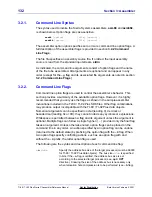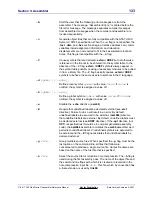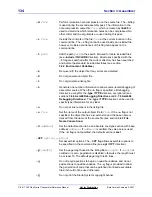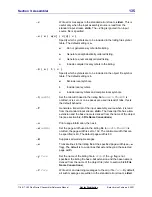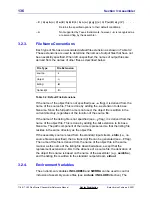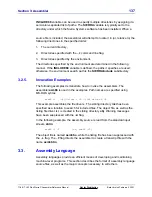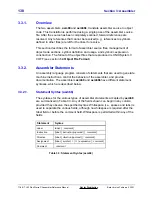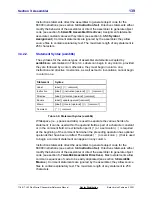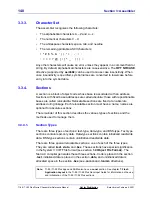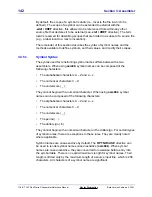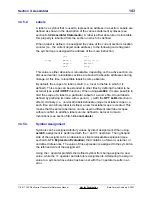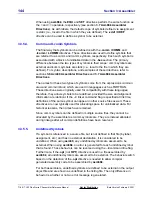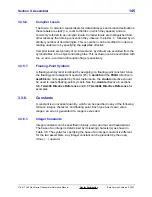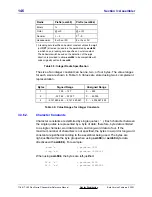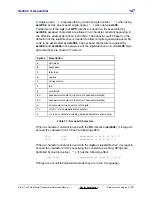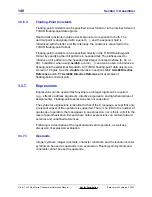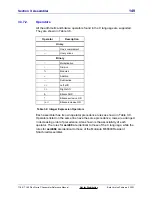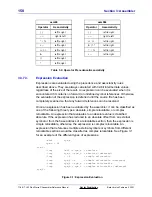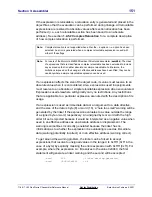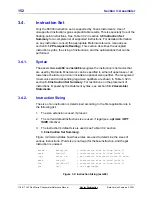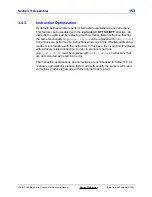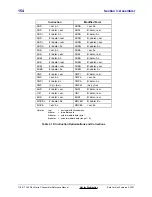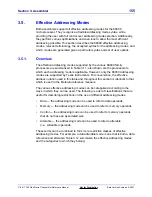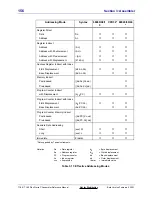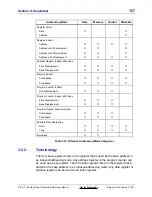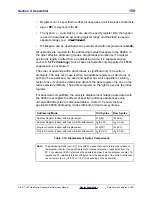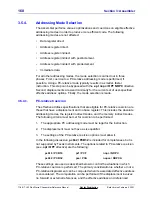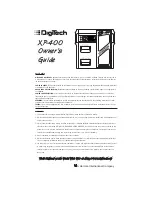
Section 3: Assembler
145
TI
-
89 / TI
-
92 Plus Sierra C Assembler Reference Manual
Not for Distribution
Beta Version February 2, 2001
3.3.5.6. Compiler
Locals
The Sierra C compiler creates labels for data addresses and branch destinations;
these labels are static (i.e., local to the files in which they appear) and are
commonly referred to as
compiler locals. Compiler locals are distinguished from
other labels by the naming convention they observe: the letter ‘ L ’ followed by an
arbitrary number of decimal digits. This convention can be modified to include a
leading underscore by specifying the .opt uloc directive.
Compiler locals are typically of no interest and, by default, are excluded from the
symbol tables in the object and listing files. This exclusion can be overridden with
the
-S
and
-s
command line option flags, respectively.
3.3.5.7. Floating-Point
Symbols
A floating-point symbol is defined by assigning it a floating-point constant. Since
the floating-point assignment operator (#=) in asm68 and the FEQU directive in
asm68k are not supported by Texas Instruments, the .double directive should
be used to create floating-point symbols. See the .double directive in sections
3.6.7 Asm68 Directive Reference and 3.7.7 Asm68k Directive Reference for
examples.
3.3.6. Constants
A constant is an invariant quantity, which can be specified in any of the following
formats: integer, character, and floating point. Each type has its own value
ranges; an error is generated if a range is exceeded.
3.3.6.1. Integer
Constants
Integer constants can be specified in binary, octal, decimal, and hexadecimal.
The base of an integer is determined by its leading character(s) as shown in
Table 3.5. The syntax for specifying the base of an integer constant is different
for the two assemblers. Any integer constant can be preceded by the unary
minus (
-
) operator.


